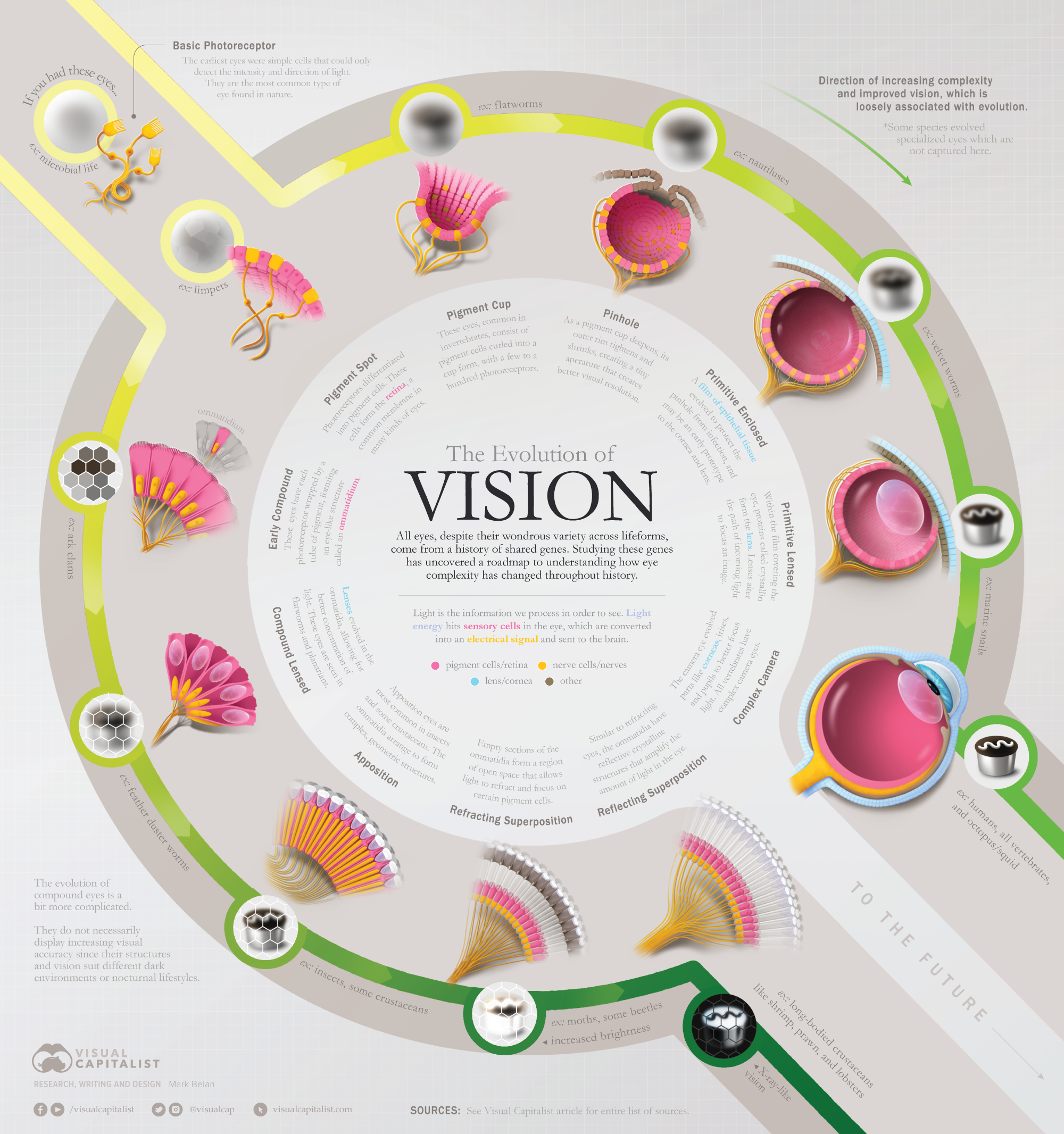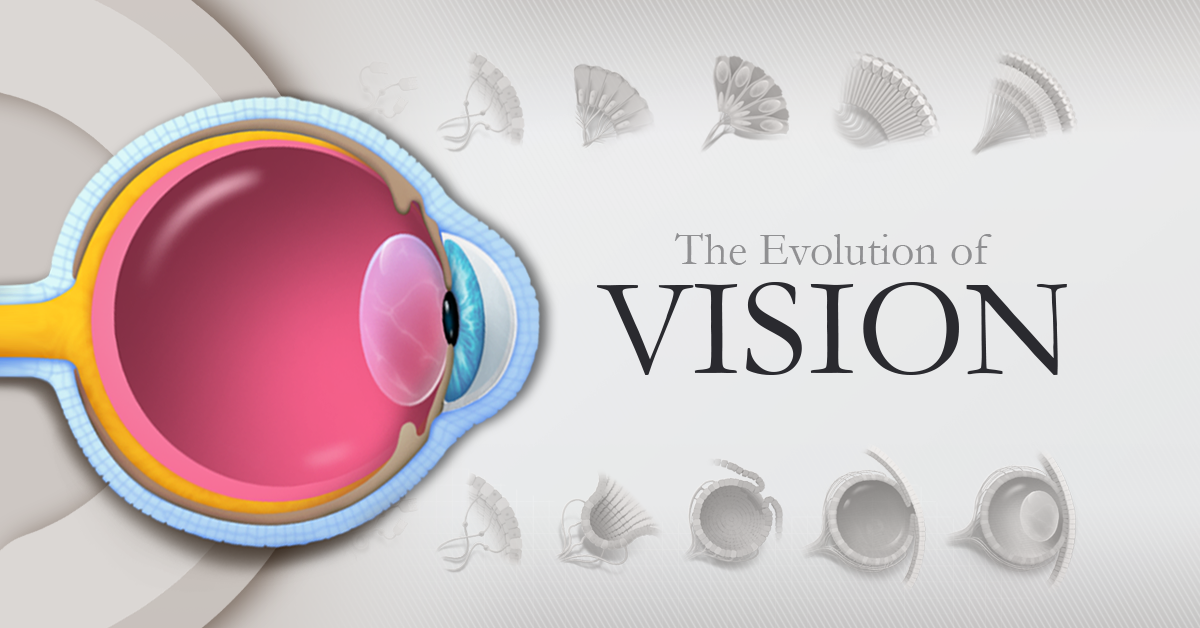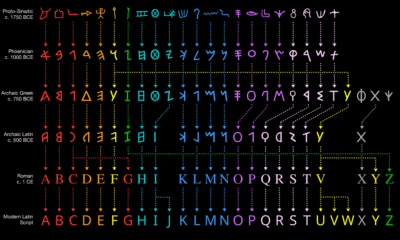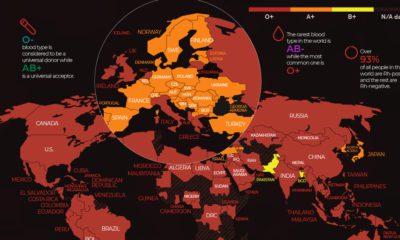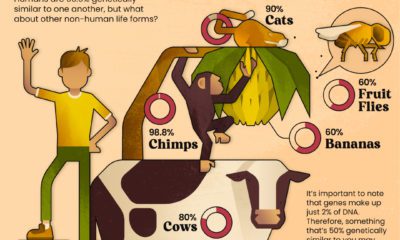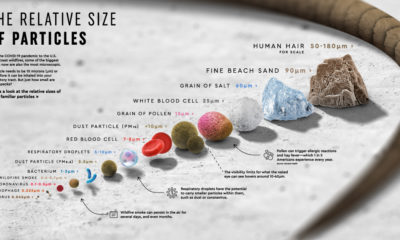Misc
Visualizing the Evolution of Vision and the Eye
View the high-resolution version of this graphic.
Roadmapping the Evolution of the Eye
Throughout history, numerous creatures have evolved increasingly complex eyes in response to different selective pressures.
Not all organisms, however, experience the same pressures. It’s why some creatures today still have eyes that are quite simple, or why some have no eyes at all. These organisms exemplify eyes that are “frozen” in time. They provide snapshots of the past, or “checkpoints” of how the eye has transformed throughout its evolutionary journey.
Scientists study the genes, anatomy, and vision of these creatures to figure out a roadmap of how the eye came to be. And so, we put together an evolutionary graphic timeline of the eye’s different stages using several candidate species.
Let’s take a look at how the eye has formed throughout time.
Where Vision Comes From
The retina is a layer of nerve tissue, often at the back of the eye, that is sensitive to light.
When light hits it, specialized cells called photoreceptors transform light energy into electrical signals and send them to the brain. Then the brain processes these electrical signals into images, creating vision.
The earliest form of vision arose in unicellular organisms. Containing simple nerve cells that can only distinguish light from dark, they are the most common eye in existence today.
The ability to detect shapes, direction, and color comes from all of the add-ons evolution introduces to these cells.
Two Major Types of Eyes
Two major eye types are dominant across species. Despite having different shapes or specialized parts, improved vision in both eye types is a product of small, gradual changes that optimize the physics of light.
Simple Eyes
Simple eyes are actually quite complex, but get their name because they consist of one individual unit.
Some mollusks and all of the higher vertebrates, like birds, reptiles, or humans, have simple eyes.
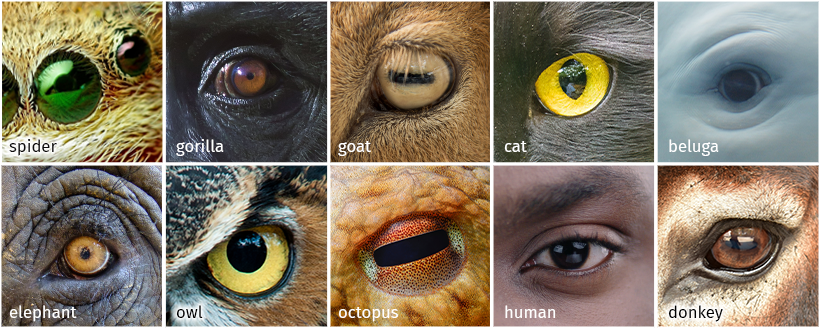
Simple eyes evolved from a pigment cup, slowly folding inwards with time into the shape we recognize today. Specialized structures like the lens, cornea, and pupil arose to help improve the focus of light on the retina. This helps create sharper, clearer images for the brain to process.

Compound Eyes
Compound eyes are formed by repeating the same basic units of photoreceptors called ommatidia. Each ommatidium is similar to a simple eye, composed of lenses and photoreceptors.
Grouped together, ommatidia form a geodesic pattern that is commonly seen in insects and crustaceans.
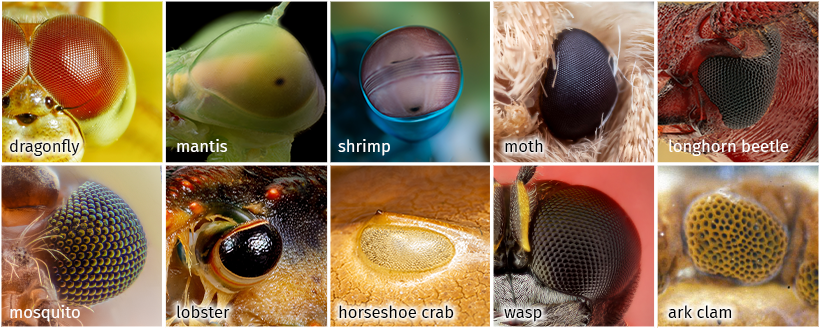
Our understanding of the evolution of the compound eye is a bit murky, but we know that rudimentary ommatidia evolved into larger, grouped structures that maximize light capture.

In environments like caves, the deep subsurface, or the ocean floor where little to no light exists, compound eyes are useful for producing vision that gives even the slightest advantage over other species.
How Will Vision Evolve?
Our increasing dependency on technology and digital devices may be ushering in the advent of a new eye shape.
The muscles around the eye stretch to shift the lens when staring at something close by. The eye’s round shape elongates in response to this muscle strain.
Screen time with cellphones, tablets, and computers has risen dramatically over the years, especially during the COVID-19 pandemic. Recent studies are already reporting rises in childhood myopia, the inability to see far away. Since the pandemic, cases have increased by 17%, affecting almost 37% of schoolchildren.
Other evolutionary opportunities for our eyes are currently less obvious. It remains to be seen whether advanced corrective therapies, like corneal transplants or visual prosthetics, will have any long-term evolutionary impact on the eye.
For now, colored contacts and wearable tech may be our peek into the future of vision.
Complete Sources
Fernald, Russell D. “Casting a Genetic Light on the Evolution of Eyes.” Science, vol. 313, no. 5795, 29 Sept. 2006, pp. 1914–1918
Gehring, W. J. “New Perspectives on Eye Development and the Evolution of Eyes and Photoreceptors.” Journal of Heredity, vol. 96, no. 3, 13 Jan. 2005, pp. 171–184. Accessed 18 Dec. 2019.
“The Evolution of Sight | PHOS.”
Land, Michael F, and Dan-Eric Nilsson. Animal Eyes. Oxford ; New York, Oxford University Press, 2002.
“The Major Topics of the Research Work of Prof. Dan-E. Nilsson: Vision-Research.eu – the Gateway to European Vision Research.” Accessed 3 Oct. 2022.
Politics
Charted: Trust in Government Institutions by G7 Countries
How much do you trust the government and its various institutions? We look at data for G7 countries for the time period of 2006-2023.
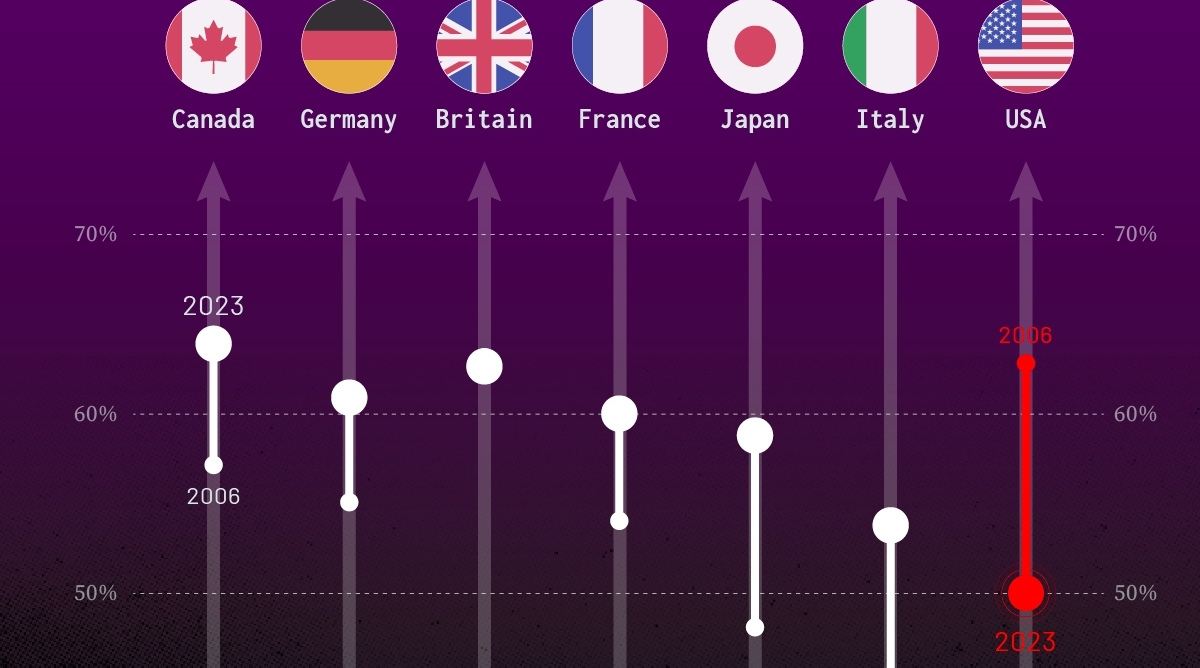
Trust in Government Institutions by G7 Countries
This was originally posted on our Voronoi app. Download the app for free on iOS or Android and discover incredible data-driven charts from a variety of trusted sources.
How much do you trust the government, and its various institutions?
It’s likely that your level of confidence probably depends on a wide range of factors, such as perceived competency, historical context, economic performance, accountability, social cohesion, and transparency.
And for these same reasons, trust levels in government institutions also change all the time, even in the world’s most developed countries: the G7.
Confidence in Government by G7 Countries (2006-2023)
This chart looks at the changes in trust in government institutions between the years 2006 and 2023, based on data from a multi-country Gallup poll.
Specifically, this dataset aggregates confidence in multiple national institutions, including the military, the judicial system, the national government, and the integrity of the electoral system.
| Country | Confidence (2006) | Confidence (2023) | Change (p.p.) |
|---|---|---|---|
| Canada | 57% | 64% | +7 |
| Britain | 63% | 63% | +0 |
| Germany | 55% | 61% | +6 |
| France | 54% | 60% | +6 |
| Japan | 48% | 59% | +11 |
| Italy | 41% | 54% | +13 |
| United States | 63% | 50% | -13 |
What’s interesting here is that in the G7, a group of the world’s most developed economies, there is only one country bucking the general trend: the United States.
Across most G7 countries, confidence in institutions has either improved or stayed the same between 2006 and 2023. The largest percentage point (p.p.) increases occur in Italy and Japan, which saw +13 p.p. and +11 p.p. increases in trust over the time period.
In the U.S., however, confidence in government institutions has fallen by 13 p.p. over the years. What happened?
Key Figures on U.S. Trust in Institutions
In 2006, the U.S. was tied with the UK as having the highest confidence in government institutions, at 63%.
But here’s where the scores stand in 2023, across various institutions:
| 🇺🇸 Institutions | Confidence (2023) |
|---|---|
| Military | 81% |
| Judiciary | 42% |
| National Government | 30% |
| Elections | 44% |
| Overall | 49% |
Based on this data, it’s clear that the U.S. lags behind in three key indicators: confidence in the national government, confidence in the justice system, and confidence in fair elections. It ranked in last place for each indicator in the G7.
One other data point that stands out: despite leading the world in military spending, the U.S. is only the third most confident in its military in the G7. It lags behind France (86%) and the United Kingdom (83%).
-

 Technology6 days ago
Technology6 days agoVisualizing AI Patents by Country
-

 Green2 weeks ago
Green2 weeks agoRanking the Top 15 Countries by Carbon Tax Revenue
-

 Markets2 weeks ago
Markets2 weeks agoU.S. Debt Interest Payments Reach $1 Trillion
-

 Mining2 weeks ago
Mining2 weeks agoGold vs. S&P 500: Which Has Grown More Over Five Years?
-

 Uranium2 weeks ago
Uranium2 weeks agoThe World’s Biggest Nuclear Energy Producers
-

 Misc2 weeks ago
Misc2 weeks agoHow Hard Is It to Get Into an Ivy League School?
-

 Debt2 weeks ago
Debt2 weeks agoHow Debt-to-GDP Ratios Have Changed Since 2000
-

 Culture2 weeks ago
Culture2 weeks agoThe Highest Earning Athletes in Seven Professional Sports

